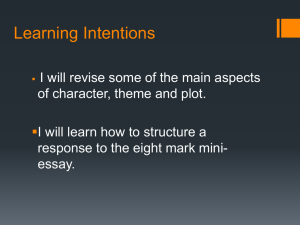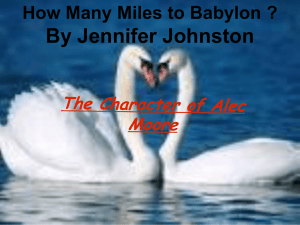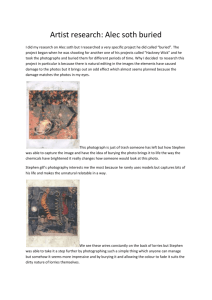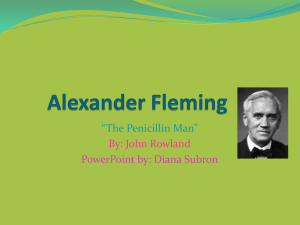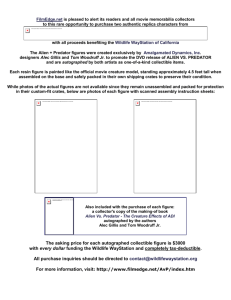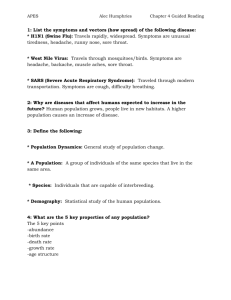The Black Stallion and the Mythology of Bucephalus
advertisement
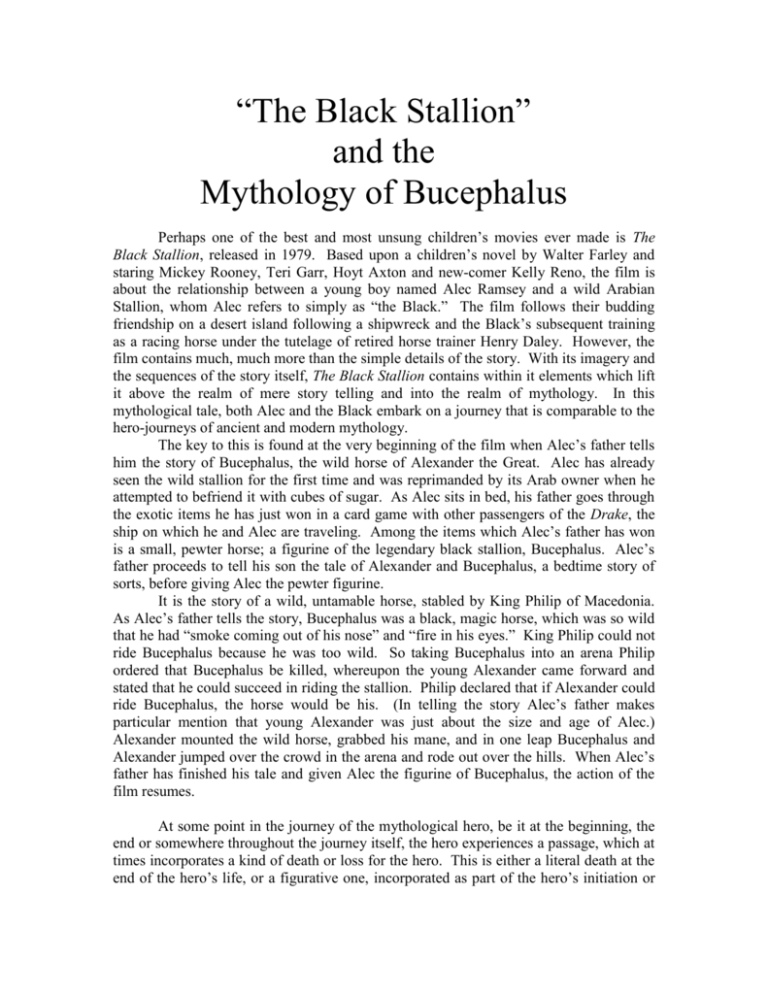
“The Black Stallion” and the Mythology of Bucephalus Perhaps one of the best and most unsung children’s movies ever made is The Black Stallion, released in 1979. Based upon a children’s novel by Walter Farley and staring Mickey Rooney, Teri Garr, Hoyt Axton and new-comer Kelly Reno, the film is about the relationship between a young boy named Alec Ramsey and a wild Arabian Stallion, whom Alec refers to simply as “the Black.” The film follows their budding friendship on a desert island following a shipwreck and the Black’s subsequent training as a racing horse under the tutelage of retired horse trainer Henry Daley. However, the film contains much, much more than the simple details of the story. With its imagery and the sequences of the story itself, The Black Stallion contains within it elements which lift it above the realm of mere story telling and into the realm of mythology. In this mythological tale, both Alec and the Black embark on a journey that is comparable to the hero-journeys of ancient and modern mythology. The key to this is found at the very beginning of the film when Alec’s father tells him the story of Bucephalus, the wild horse of Alexander the Great. Alec has already seen the wild stallion for the first time and was reprimanded by its Arab owner when he attempted to befriend it with cubes of sugar. As Alec sits in bed, his father goes through the exotic items he has just won in a card game with other passengers of the Drake, the ship on which he and Alec are traveling. Among the items which Alec’s father has won is a small, pewter horse; a figurine of the legendary black stallion, Bucephalus. Alec’s father proceeds to tell his son the tale of Alexander and Bucephalus, a bedtime story of sorts, before giving Alec the pewter figurine. It is the story of a wild, untamable horse, stabled by King Philip of Macedonia. As Alec’s father tells the story, Bucephalus was a black, magic horse, which was so wild that he had “smoke coming out of his nose” and “fire in his eyes.” King Philip could not ride Bucephalus because he was too wild. So taking Bucephalus into an arena Philip ordered that Bucephalus be killed, whereupon the young Alexander came forward and stated that he could succeed in riding the stallion. Philip declared that if Alexander could ride Bucephalus, the horse would be his. (In telling the story Alec’s father makes particular mention that young Alexander was just about the size and age of Alec.) Alexander mounted the wild horse, grabbed his mane, and in one leap Bucephalus and Alexander jumped over the crowd in the arena and rode out over the hills. When Alec’s father has finished his tale and given Alec the figurine of Bucephalus, the action of the film resumes. At some point in the journey of the mythological hero, be it at the beginning, the end or somewhere throughout the journey itself, the hero experiences a passage, which at times incorporates a kind of death or loss for the hero. This is either a literal death at the end of the hero’s life, or a figurative one, incorporated as part of the hero’s initiation or passage into adventure. It can also be simply the moment when the hero leaves home, departing the familiar for the world of the unknown. This loss can be either liberating or tragic, depending on the circumstances. Moses experiences this passage when he is set down the river in a basket, passing from his own people, the Hebrew slaves, into the realm of royalty when he is found by the Pharaoh’s daughter. In the case of Heracles of Greek myth, the hero suffered excruciating pain at the hands of his wife who laced his clothing with the blood of the hydra. This burning pain was unbearable and it was only through dying that Heracles could escape. Upon his death, he entered the realm of the divine and joined his father, Zeus, among the gods of Olympus. But whatever the case, this passage and loss marks a turning point in the life-journey of the hero or heroes and the beginning of the heroic process of the myth. For Alec and the Black this passage takes place when they become the only two survivors after the Drake catches fire and sinks during a storm. The fire breaks out during the night. For Alec it is a tremendous loss because his father is killed in the shipwreck. When Alec is on the ship, chaos and light surround him. The lights of the ship continue to burn, but he finds himself in a chaotic frenzy as the fire rages and the other passengers shuffle in a panic around him. Even though the ship is lit up, it is a ship of death for Alec and the other passengers. When Alec falls overboard, he descends into a realm of darkness. He falls from the familiarity of the ship into the unfamiliar darkness of the sea. He experiences a death of sorts when he falls into this darkness, finding himself alone and helpless beside the sinking ship. This is not an act of Alec’s will. In fact, his father had told him to stay in one place until he returned for him. Rather Alec becomes so overwhelmed by the chaos and the panic on the ship that he is quite literally swept overboard and falls into the sea. For the Black, however, the shipwreck is liberation from his Arab captors who are earlier portrayed as tying and whipping the wild horse in order to control him. During the fire when Alec opens the door of the stable the Black breaks free of the ropes that tie him to the walls. He runs out onto the deck of the burning ship and willingly jumps overboard. Hence, for the Black this passage is an escape, while for Alec it is a loss and a “death of sorts.” Grabbing onto the Black, Alec is taken to the island where the next stage of their journey will commence. In many ways, it is during the Island Sequence of The Black Stallion that the story transcends the world and enters the realm of myth. At the beginning of the film, the story is set on the Drake, off the coast of North Africa in the year 1946. While the story continues to be set in 1946 and the island is most likely off the coast of North Africa there is nothing on the island itself between the scenery, the Black or Alec himself that can pin-point the story as being set in that particular time and place. There are no buildings. No ship or plane is seen in the distance. After the Black is freed from his ropes early in the sequence he has no saddle or bridle. Even Alec, himself, is shipwrecked in his pajamas, which eventually deteriorate into little more than a loincloth covering his waste. Not even his clothes give indication as to the time and setting of the story. For all intents and purposes, the sequence on the island could be set at any time in history and any place in the world. The story, therefore, leaves the realm of time and enters a state of timelessness. Like the mythological hero, Alec has left the world for a time, destined to eventually return. The Island Sequence also takes on elements in which the legend of Alexander and Bucephalus is paralleled. After waking up on the island, the first thing to fall out of Alec’s pocket is the pewter horse, which Alec made a point of grabbing before leaving his stateroom when the ship caught fire. We see the pewter Bucephalus again when Alec lights a fire on the beach. As the Black runs by, Alec lowers his face behind the figurine resting on a rock in front of him. We see, from Alec’s point of view, the Black running behind the pewter Bucephalus, linking the Black with the legendary horse. As the name Alec is a shortened variation of Alexander, it is easy to see Alec and the Black as paralleling Alexander and Bucephalus. Just as Alexander was able to ride the wild Bucephalus, Alec sets to tame for himself the wild Arabian Stallion with which he has been stranded on the island. It must first be noted, however, that Alec does not immediately encounter the Black on the island. The story of their befriending one another does not begin until Alec has mourned his loss in the shipwreck. Alec awakens on the island alone. The horse is nowhere in sight. Alec wanders aimlessly during his first day on the island and is eventually seen with tears in his eyes as he hunkers down in a small cave for the night. It is only after mourning his “death of sorts” – which undoubtedly includes the death of his father and all that is familiar to him – that the story of he and the Black proceeds. Alec and the Black are alone on the island and for a time there is a distance between them. On the ship a connection was attempted when Alec fed the Black sugar cubes. The Black’s owner interrupted that attempt. Again, as the ship sank, a connection was made when Alec cut the Black loose from the turning propeller, saving the horse from being dragged down with the ship. The Black, in turn, tows Alec to the island, but the distance between the two persists. In Alec’s first island encounter with the Black, the horse is snagged onto rocks by the ropes of the harness to which he is still tied. Alec takes the initiative and frees the Black from the ropes and harness, whereupon the Black, only interested in his immediate freedom, runs away. The distance remains. Alec sees the Black on the island only from afar. When he attempts to follow the Black’s footprints in the sand, they eventually run into the sea where they vanish as the waves wash over them. The first indication that a real connection has been made comes when Alec, sleeping on the sand, awakes to find himself face to face with a serpent. Seemingly from nowhere, the Black appears and tramples the serpent to death as Alec looks on. Again, however, the Black runs away, leaving Alec alone. While the distance between them still remains, the Black has responded to Alec’s act of freeing it from the ropes. The Black has returned the favor by saving Alec from the serpent. Shortly after this occurrence, and following the image of the Black running behind the figure of Bucephalus, Alec actively sets to the task of befriending the Black. He begins by placing a turtle shell of seaweed for the Black to eat and later attempts to feed him by hand. The Black’s growing trust of Alec reaches a crescendo when he eats from Alec’s hand and the two proceed to run, play or “dance” together on the beach, after which they stand together watching the sunset. However, Alec’s task is not complete. His greatest challenge is in riding the Black. In the first few attempts Alec is either thrown or falls off of the Black into the water. However, when he succeeds in holding on, he and the Black ride over the beach, splashing in the water in a triumphant ride around the island, climaxing in the moment when Alec lets go of the Black’s main, raising his arms up and out. With the bouncing of the Black beneath him, Alec’s arms take on the image of flying. Indeed, on the mythological level, Alec and the Black are in fact flying as the two continue their ride. The mythological imagery reaches its climax in this scene as the young, naked, helpless boy rides triumphantly, having tamed the wild beast with aid, compassion, play and daring risk in riding him; a daring and bravery akin only to heroes of mythic proportions. Alec has become young Alexander and the Black has become the tamed Bucephalus. Alec and the Black have become intricately linked. This is shown further in the final island scene before their rescue when, in the light of the fire, Alec lays against the Black as the two of them drift to sleep. Alexander has tamed Bucephalus. Alec has befriended the Black. Their lives and the connection between the two have reached a level far greater than before the shipwreck. The Black has been tamed, somewhat, by Alec. However, Alec has also learned to tap into the wild nature of the Black as he has learned to live on a primitive, desert island. Alec and the Black have entered their own state of paradise. Gone is Alec’s fear and sadness that followed upon the shipwreck. Gone is the Black’s wild recklessness brutally controlled at the hands of his Arabian owner. Gone is the unfamiliarity of the island. It is now the world of Alec and the Black. Alexander and his horse now dominate it as they ride over their domain; their eyes ever fixed on the world beyond the sea. This is the world in which their lives are free. This is the world in which the two of them act as one. Now and only now can the hero return to society after living for a period beyond time, society and the world. Now and only now does the hero and his boon companion, his talisman of heroism, the object of his new identity, step out of paradise, back into the world from which they came. The rescue brings Alec and the Black back into the world of 1946. At first, Alec is taken against his will as three fishermen drag him to their boat and proceed to row him to their ship. Before the shipwreck of the Drake, the Black would have kept his distance, afraid to approach the strangers. Now he is familiar with Alec and Alec is being taken away. The Black leaps into the sea to follow the boat, whereupon the fishermen hoist him onto their ship to carry him, with Alec, back into the world. Alec and the Black’s adventure in society mirrors the adventure on the island in that it is now Alec’s task to tame the Black into the world of 1946. The primary tool in which he does this is the trust the Black has in him and the connection between them that developed while on the island. Having tamed the Black in the wild, timeless paradise of the island, Alec must now tame the Black in the world. This is done with the aid of retired horse trainer Henry Daley who becomes the only other person, other than Alec, to overcome the Black’s wild nature. When the Black becomes spooked by a garbage collector at Alec’s home and runs away into the city, not even Alec can stop him. Alec eventually finds the Black in the barn of Henry Daley. This time it is Henry, not Alec, who manages to catch and confine the stallion. Another important element in the journey of the hero is the presence of the mentor who aids the hero with teaching, wisdom and guidance towards the ultimate goal of the hero journey, without actually doing the task for the hero. The hero is usually an old man or an old wizard or hermit. To anyone familiar with mythological motifs Merlin the Magician in the legend of King Arthur and perhaps Obi Wan Kenobi and Yoda of the Star Wars Saga come to mind. Henry Daley becomes for Alec a mentor and guide who helps in training the Black. Being a retired horse trainer, he holds an innate ability to connect with the Black that Alec does not have. Initially Alec had learned to ride the wild horse in the wild atmosphere of the island. Henry now trains Alec to ride like a professional jockey. He teaches Alec to ride so as to curb the wild nature of both Alec and the Black when they ride together. Finally, Henry makes use of old connections in the horse racing industry to sign the Black for a race against two unbeatable champions. Helping to maintain in Alec’s view a balance between the Black’s training and his wild nature is Snoe, an old black gentleman who first guided Alec to Henry. In his own reflective way, the gentleman sees that the Black must stay wild because it is what makes the Black who he is. Even though there is a connection between Alec and the Black, Alec can never fully know the Black. The Black must always remain wild and to some degree mysterious and unpredictable. It is only insofar as he is wild that he can truly be known. This balance between wild and tame comes into play at the story’s climax. Once the Black is accepted into the race with the other two champions the task of finding a jockey is briefly touched upon. It is clearly implied that only Alec is capable of racing the Black. This leads, of course, to the task of persuading Alec’s mother to allow him to ride. Her initial answer is no. However, a conversation between she and Alec, following her confrontation of Henry, changes that. In the conversation Alec tells his mother the story of the shipwreck and how the Black came to save his life. The conversation between Alec and his mother creates a number of links between the different elements of the film. First, it links Alec and his father to the legend of Bucephalus. Alec shows his mother the pewter figurine of Bucephalus and explains how his father had given it to him before the storm, just as King Philip had given Bucephalus to Alexander before his death. Second, it links Alec’s father to the Black. Alec explains that when he had fallen into the sea – where it was dark and he was afraid – he called out for his father, but could not see him. Rather he “looked up and there was the Black” who saved his life. Finally, the conversation links the race to the myth of Bucephalus and the loss of Alec’s father. After explaining the first two links to his mother – the loss of the father and the Black’s rescue of Alec – the mother asks simply, “what am I going to do?” To which Alec responds, “I’ve got to ride.” In the film, it is a full twenty-five seconds of thought, taking in the conversation, before Alec’s mother agrees to allow him to ride. The final race is the culmination of all of the elements of the film. It links the Island Sequence to the experience of the race at Santa Anita Racetrack. It mythologizes Alec and the Black and serves as a final link to the legend of Alexander and Bucephalus. As the race begins, Alec is dressed in a black jockey suit and an elaborate mask. The public knows the Black simply as “the Mystery Horse.” There is a great deal of anticipation as to the identity of the two and what their performance will be in the race. The crowd at Santa Anita in many ways mirrors the crowd of the arena in the Bucephalus legend. Even the other jockeys are doubtful that this small, mysterious boy can ride. When the gates open and the three horses take off, the Black does not begin well. At first there is a struggle between Alec and the Black. Seeing that the Black has been injured Alec attempts to stop him, but the Black seeks to race forward. The result is that the other two horses pull far ahead. When Alec gives into the Black and allows him to race, he struggles with the reigns, trying vainly at times to hold on. Finally, he throws off his helmet and goggles, grabs the mane and lets the Black run. Alec has again embraced the wild stallion as Snoe had encouraged him to do. Alec has allowed the Black to be wild. He has thrown aside his worldly training under Henry, and rides the Black, once again, as he did on the island. It is then that the Black begins to gain ground. Finally, as Alec and the Black slowly catch up to their rivals, the scene flashes back to the two of them on the island, riding free and wild, the masters of their realm. In linking the island experience to the experience of the race, the flashback inserts the myth into the world of 1946. Alec and the Black are now mythologized in the world as they were on the island, and it is no longer Alec and the Black who race, but Alexander and Bucephalus. The scene returns to Santa Anita, where the Black wins. Alec raises his hands in triumph as he did on the island, flying before the astonished crowd in the arena of Santa Anita. As Alec, his mother and Henry celebrate their victory, Alec again is seen holding the pewter figurine of Bucephalus; a final reminder of the myth having entered the world of 1946 in the figures of Alec and the Black. As the credits roll the final images of The Black Stallion are of the island. It is there that we, the viewers, leave Alec and the Black in their timeless world of freedom and myth. It is there on the island that Alexander and Bucephalus – Alec and the Black – continue to live, play and ride over the beaches and dunes of their island paradise. By: William C. Nicholas, Jr. November 29, 2002

